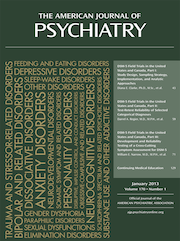Defense Mechanisms Reported by Patients With Borderline Personality Disorder and Axis II Comparison Subjects Over 16 Years of Prospective Follow-Up: Description and Prediction of Recovery
Abstract
Objective
The authors assessed the defensive functioning of 290 patients with borderline personality disorder and compared it with that of 72 patients with other forms of axis II psychopathology over 16 years of prospective follow-up. They also assessed the relationship between time-varying defenses and recovery from borderline personality disorder.
Method
The Defense Style Questionnaire, a self-report measure with demonstrated criterion validity and internal consistency, was initially administered at study entry. It was readministered at eight contiguous 2-year follow-up periods.
Results
Borderline patients had significantly lower scores than axis II comparison subjects on one mature defense mechanism (suppression) and significantly higher scores on seven of the other 18 defenses studied: one neurotic-level defense (undoing), four immature defenses (acting out, emotional hypochondriasis, passive aggression, and projection), and two image-distorting/borderline defenses (projective identification and splitting). Over the follow-up period, borderline patients showed significant improvement on 13 of the 19 defenses studied, with significantly higher scores over time on one mature defense (anticipation) and significantly lower scores on two neurotic defenses (isolation and undoing), all immature defenses, and all image-distorting/borderline defenses except primitive idealization. In addition, four time-varying defense mechanisms were found to predict time to recovery: humor, acting out, emotional hypochondriasis, and projection.
Conclusions
Taken together, these results suggest that the longitudinal defensive functioning of borderline patients is distinct and improves substantially over time. They also suggest that immature defenses are the best predictor of time to recovery.



